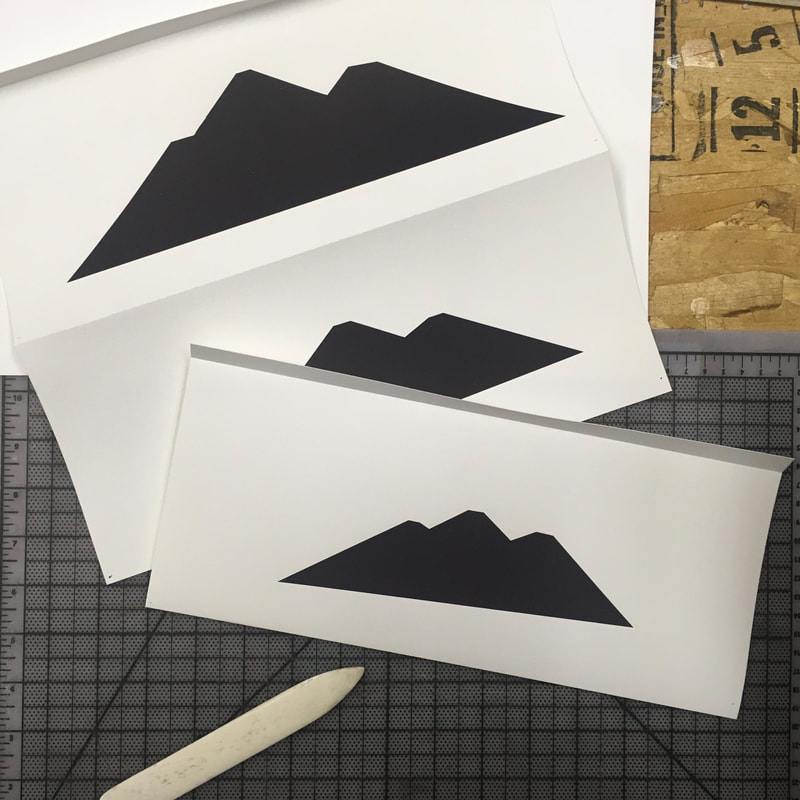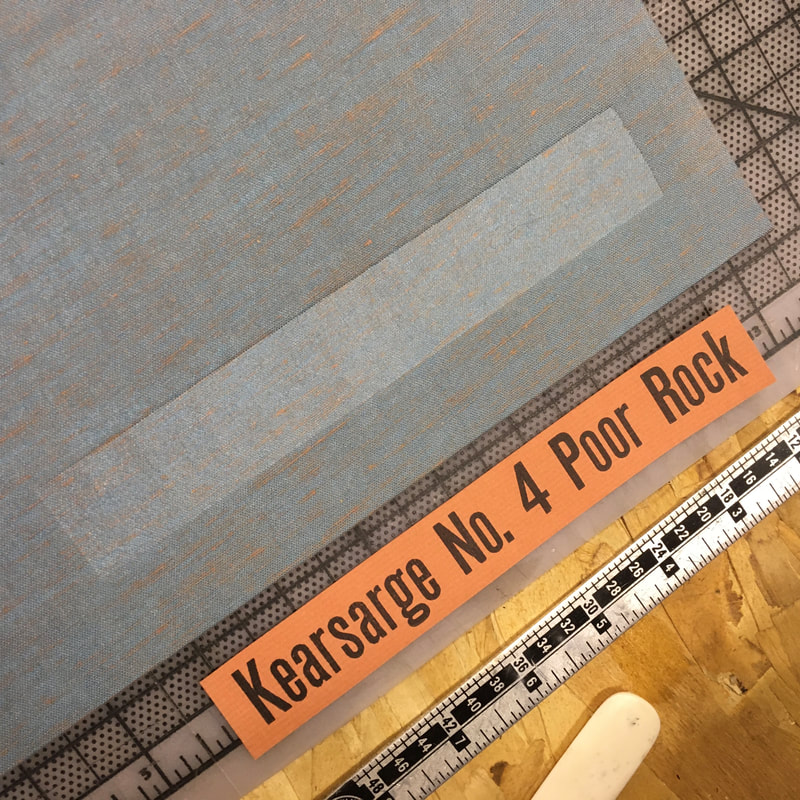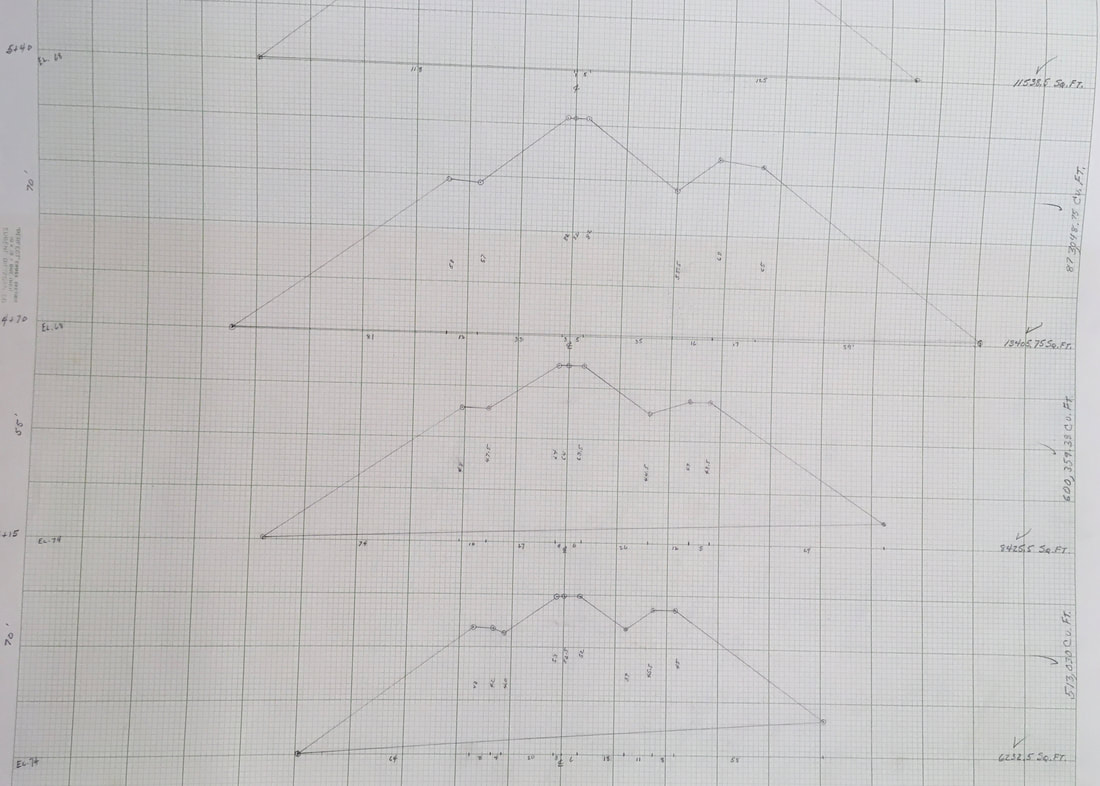CURRENT PROJECT
KEARSARGE No. 4 POOR ROCK (working title)
2022, 12-1/4" x 5-1/2", accordion fold with 10 illustrated panels (dimensions and structure subject to change)
In 1956, the Calumet & Hecla Consolidated Copper Company's surveyors measured the waste rock piles at several of its mine shafts in the Keweenaw Peninsula of Michigan's Upper Peninsula, calculating the tonnage of the rock with the idea of extracting copper from it using improved ore processing technology that was not available when the rock was deposited as waste during the course of mine operations. In 1956, the Kearsarge No. 4 mine's rock pile towered over scrub trees and formed a peninsula extending into the swamp outside the town of Copper City. The rock came from shaft sinking and drift cutting and other mining activity occurring outside of the copper vein. The miners called it "poor rock" because it held so little copper in comparison to the rock from the vein. Kearsarge No. 4 poor rock pile is gone now, crushed and hauled off for purposes other than extracting copper from it. All that's left is a berm of rock tracing the edge of the peninsula and the shapes the surveyors drew in 1956. Kearsarge No. 4 Poor Rock uses those shapes, cross sections of the rock pile rationalized and abstracted into straight lines, as the starting point for a set of illustrations and an inquiry into the nature/culture divide, labor, and geomorphological change as reflected in the extant and vanished waste piles from past mining activity in the Keweenaw Peninsula.
2022, 12-1/4" x 5-1/2", accordion fold with 10 illustrated panels (dimensions and structure subject to change)
In 1956, the Calumet & Hecla Consolidated Copper Company's surveyors measured the waste rock piles at several of its mine shafts in the Keweenaw Peninsula of Michigan's Upper Peninsula, calculating the tonnage of the rock with the idea of extracting copper from it using improved ore processing technology that was not available when the rock was deposited as waste during the course of mine operations. In 1956, the Kearsarge No. 4 mine's rock pile towered over scrub trees and formed a peninsula extending into the swamp outside the town of Copper City. The rock came from shaft sinking and drift cutting and other mining activity occurring outside of the copper vein. The miners called it "poor rock" because it held so little copper in comparison to the rock from the vein. Kearsarge No. 4 poor rock pile is gone now, crushed and hauled off for purposes other than extracting copper from it. All that's left is a berm of rock tracing the edge of the peninsula and the shapes the surveyors drew in 1956. Kearsarge No. 4 Poor Rock uses those shapes, cross sections of the rock pile rationalized and abstracted into straight lines, as the starting point for a set of illustrations and an inquiry into the nature/culture divide, labor, and geomorphological change as reflected in the extant and vanished waste piles from past mining activity in the Keweenaw Peninsula.


